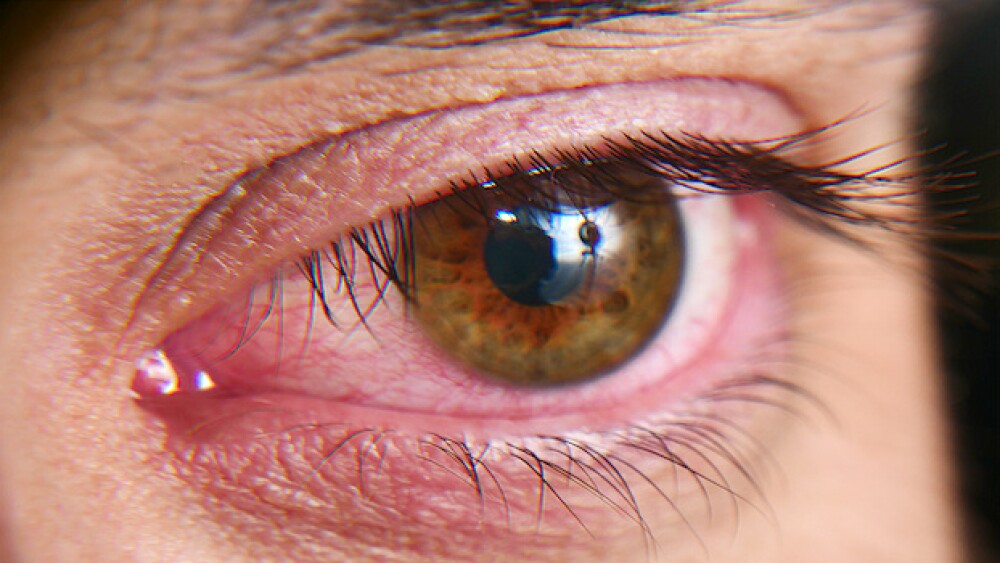Palatin Technologies’ melanocortin agonist PL9643 came up short in a late-stage study evaluating its safety and efficacy.
Pictured: A close-up image of a red, irritated dry eye/courtesy of Kryuchka Yaroslav/Adobe Stock
New Jersey-based Palatin Technologies announced Wednesday that the results for its dry eye disease candidate, PL9643, did not reach some of its primary and secondary endpoints in a pivotal late-stage study.
The Phase III Melody-1 trial, evaluating the safety and efficacy of the melanocortin agonist PL9643, had two primary endpoints—one clinical symptom, pain, and one clinical sign, conjunctival lissamine green standing—along with other secondary endpoints.
Palatin said that the candidate showed statistically significant results for the pain endpoint, with a p-value of <0.025. However, Palatin noted “positive treatment effects over the vehicle” with the intent to treat the population.
Still, no statistical significance was found for the co-primary sign endpoint and secondary sign endpoints. The co-primary and secondary endpoints did not reach statistical significance in the unadjusted planned analyses. No exact details were provided for these results.
“It is important to note that it is rare for one clinical study in DED to show efficacy for both a sign and a symptom. While additional analyses are ongoing, the initial results reinforce the potential of PL9643 as a treatment to address symptoms and signs of DED,” Palatin CEO Carl Spana said in a statement.
“Our comprehensive data analysis is ongoing, and upon completion, we plan to meet with the FDA to discuss and get feedback on the design of the next pivotal Phase 3 clinical trial. Furthermore, we will continue our efforts to find a collaboration partner for our DED program,” Spana added.
Palatin still touted the drug, stating that it was “clinically meaningful and statistically significantly effective” on an intent-to-treat basis, having reduced some symptoms, and overall the company was “pleased” that the candidate had favorable safety and tolerability data.
According to the company, the remainder of the Phase III study, the efficacy, and the open label studies will start enrolling patients sometime in the second half of 2024.
Palatin is facing competition in the dry eye space from Alcon which posted positive top-line results from two clinical trials in January 2024, showing its candidate AR-15512 had improved tear production.
In May of last year, the FDA approved Bausch + Lomb and Novaliq’s perfluorohexyloctane ophthalmic solution, known as Miebo, to treat the symptoms of dry eye disease—specifically tear evaporation.
Tyler Patchen is a staff writer at BioSpace. You can reach him at tyler.patchen@biospace.com. Follow him on LinkedIn.






